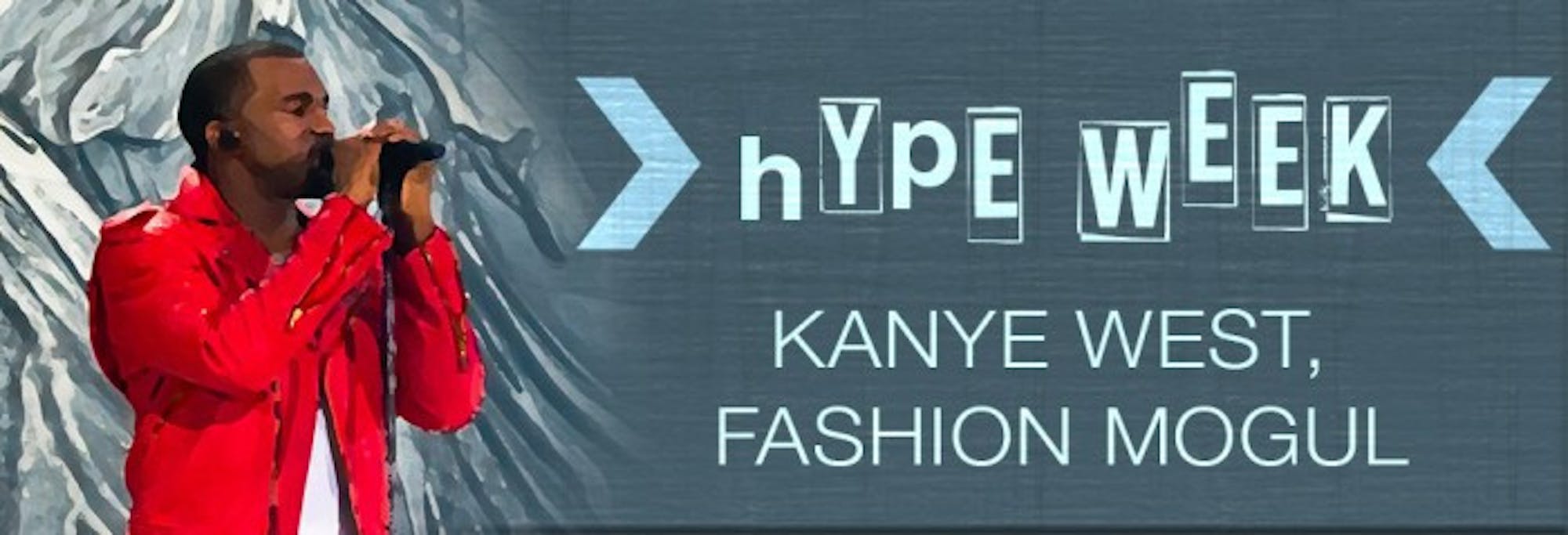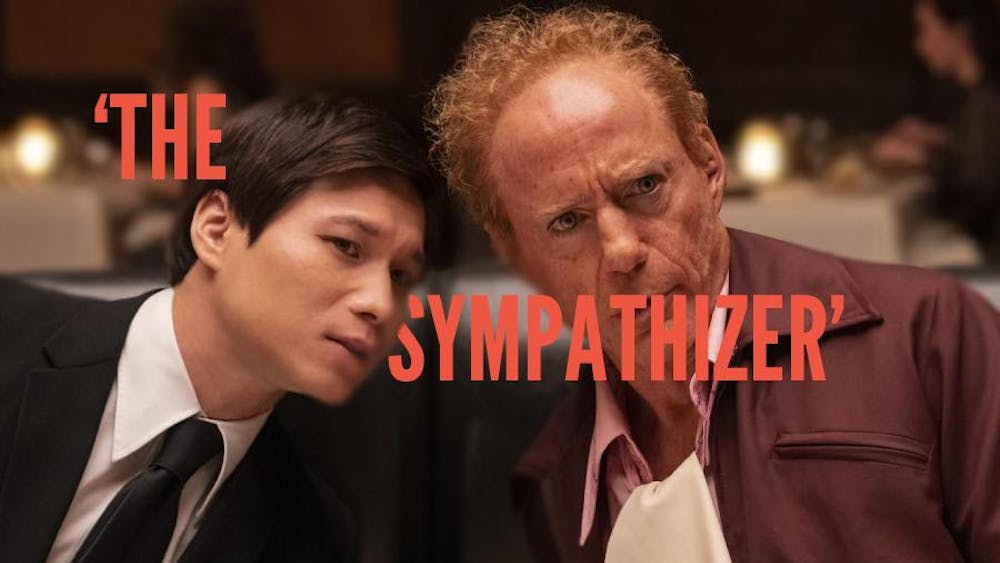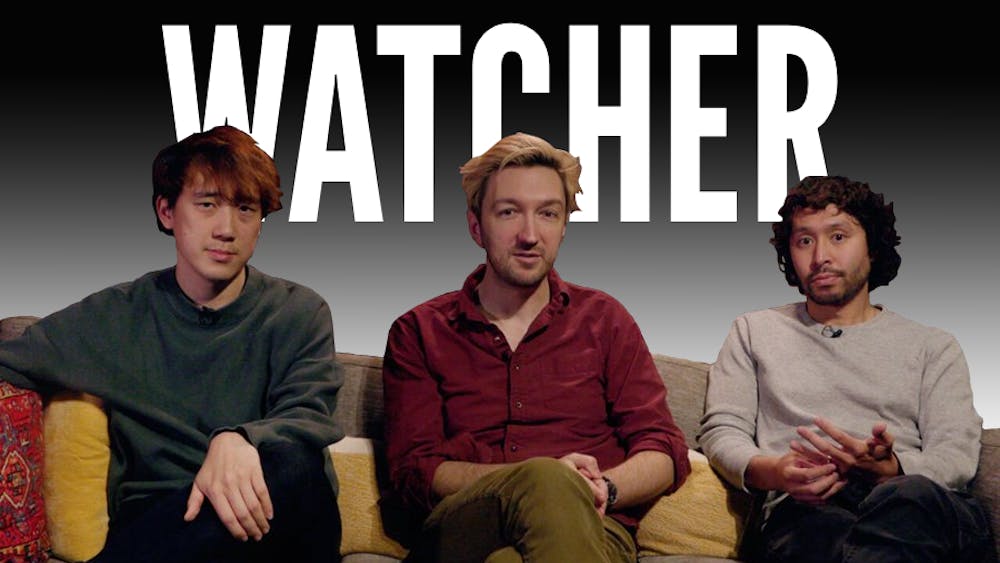
Yeezy season is approaching. This Thursday, for the first time in 968 days, we will finally have a new Kanye West album, his first since 2013’s “Yeezus.” This currently unnamed album (previously called “So Help Me God,” “SWISH” and “WAVES” throughout the creative process) will debut during a special New York Fashion Week event that will take place in Madison Square Garden and be streamed in theaters across the globe.
You see, Ye is more than just a rapper these days. He’s a producer, entrepreneur, potential presidential candidate and world-class fashion designer. For Thursday’s event, Kanye is going to be dropping Yeezy Season 3, his latest clothing collaboration with adidas.
But how did Kanye go from the dim lights of the recording studio to the flashing lights of the world’s biggest runways?
Long before Kanye became the world-topping fashion mogul he is today, he was a world-topping producer with a great, and under-appreciated, sense of style who was desperately trying to become a rapper. Back around the turn of the century, West was crafting massive hits for some of the biggest names in hip-hop, including Jay-Z, Ludacris and Alicia Keys but wasn’t able to secure a recording contract for himself.
Kanye struggled to make the transition from producer to artist in part because of his looks. Mr. West did not carry the gangster-rapper style that the industry was looking for at the time, foregoing white t-shirts, massive jeans and gold chains in favor of pink polos, skinny pants and backpacks.
But, as we all know, things quickly changed for Kanye. In 2004, Ye released “The College Dropout” to critical praise and quickly skyrocketed to become one of the biggest names in hip-hop, if not the entire music industry.
His looks, too, would catch on. Hip-hop has greatly transitioned away from the gangster-rapper stereotypes of years past and has diversified to incorporate the new, more emotional, less “tough guy” aesthetics pioneered by Kanye West in his clothing and in his music, especially those of “808s and Heartbreaks,” which has inspired the likes of Drake, The Weeknd and so many more.
But Kanye always wanted to take complete creative control of his looks and break into the high fashion industry. In Sept. 2005, West announced that he would release his Pastelle Clothing line in spring 2006, claiming, “Now that I have a Grammy under my belt and ‘Late Registration’ is finished, I am ready to launch my clothing line next spring.” This, unfortunately, did not pan out, and the clothing line was ultimately cancelled in 2009.
Despite his initial rough start, Kanye eventually had a number of successful ventures, including collaborations with Bape, Louis Vuitton and Giuseppe Zanotti.
Then in 2009, Kanye West made his biggest breakthrough yet into the fashion industry, when he and Nike teamed up to release the Air Yeezy, the shoe brand’s first non-athlete full collaboration. The first three colorways sold out almost immediately, and Kanye quickly started working on the follow-up.
This resulted in 2011’s highly anticipated Air Yeezy 2 line, which sold out literally within seconds and became the absolute hottest shoe in the market. Even now, 2014’s “Red October” variant of the shoes regularly sells for upwards of $20,000 on eBay. For its high-profile releases, Nike releases a limited number of shoes; in the case of the Air Yeezy 2, only 5,000 pairs were ever made for each colorway. By reducing the supply like this, Nike creates an artificial demand that ensures increased media attention and exorbitant resale prices, despite the low cost of production.
Kanye wasn’t satisfied with his Nike agreement and this business model. Specifically citing Nike’s alleged refusal to give Kanye royalties for his products, West abandoned the shoe manufacturer and turned to adidas, one of Nike’s biggest competitors.
With adidas, Kanye’s ambitions for the clothing industry became even more realized. Together in Feb. 2015, they produced the Yeezy Boost 750, a controversial high-top sneaker, and premiered the theatrical Yeezy Season 1, an even more controversial fashion line.
Yeezy Season 1 was different from the standard fashion runway show, incorporating elements of streetwear and a more casual, dystopian aesthetic. Kanye also made his music an integral part of the fashion campaign, tying together the two main aspects of his artistry in ways that no other fashion designer could, with the world premiere of “Wolves,” a track off of his upcoming album that also employs these darker aspects. The establishment raged against Kanye’s sartorial dreams and pioneering attitude, bashing his muted tones, baggy hoodies and shabby chic.
West ignored the critics and advanced his vision, releasing the Yeezy Boost 350, a low top sneaker, over the summer and premiering Yeezy Season 2, a continuation of the themes established in Season 1, at New York Fashion Week in September. He also debuted “Fade,” another track from his upcoming album. Again, critics were taken aback. Cathy Horn, one of fashion’s most respected critics, particularly dug into Kanye, saying that “this second round of drab, broken-down basics proved he can’t be taken seriously as a designer.”
But again, Kanye kept faith in his concept. West arguably has created the most popular shoe in the world, as the sales of the Yeezy Boost 350 firmly established Kanye’s position as a world-topping fashion icon, with all four different colorway releases sold out within minutes of their announcements. Even more colorways are expected to be released in 2016 to keep up with demand.
Since then, word from Kanye regarding his clothing line was relatively silent until January, when Yeezy Season 3 was finally announced along with the debut date of his seventh solo studio album. Unfortunately, Kanye’s latest clothing line will most definitely take a backseat to the new album because of the long delay between “Yeezus” and this album.
We still do not have many details, but Season 3 is worth paying attention to — it might shape up to be Kanye’s most impressive fashion release yet. Not only will it take place in Madison Square Garden, but, according to ads posted online, West is looking for 1,200 extras to model his new outfits, far more than were required for either Season 1 or Season 2. It has also been rumored that the Yeezy Boost 550, a mid-top variation on the line, will be previewed at the show.
More importantly, Kanye’s fashion line is meaningful because of its influence beyond the harsh criticism of the sartorial industry. West is breaking the glass ceiling of the fashion world as a black man and as a musician, expanding the scope of this traditionally exclusive industry to previously untapped audiences.
The great thing about Kanye’s fashion is that he isn’t trying to restrict it to high-class individuals. He has worked with Adidas to continually release new variations of his shoes so that fans don’t have to pay $20,000 to look good. And while the rest of his official line may be beyond the means of many consumers, Kanye’s new look is readily available and achievable by most, incorporating jean jackets, hoodies and yoga pants in stylistically simple greys, blacks and beiges that look great with anything. Ye has further stripped the pretentiousness of an elitist industry by making high fashion comfortable and more wearable on a daily basis.
By doing this, Kanye West has successfully overcome the exclusivity of the high fashion world. Time and again, Kanye has proven that no dream is too big nor any critic too discouraging. He has continuously broken through barrier after barrier, first by transitioning from producer to hip-hop icon then from hip-hop icon to fashion mogul. As much as he is criticized for his claims that he is a pioneer and a visionary, Ye can readily back these claims with his successful Yeezy fashion line.
So you should be hyped for Thursday. This is bound to be a fashion show worth remembering.













